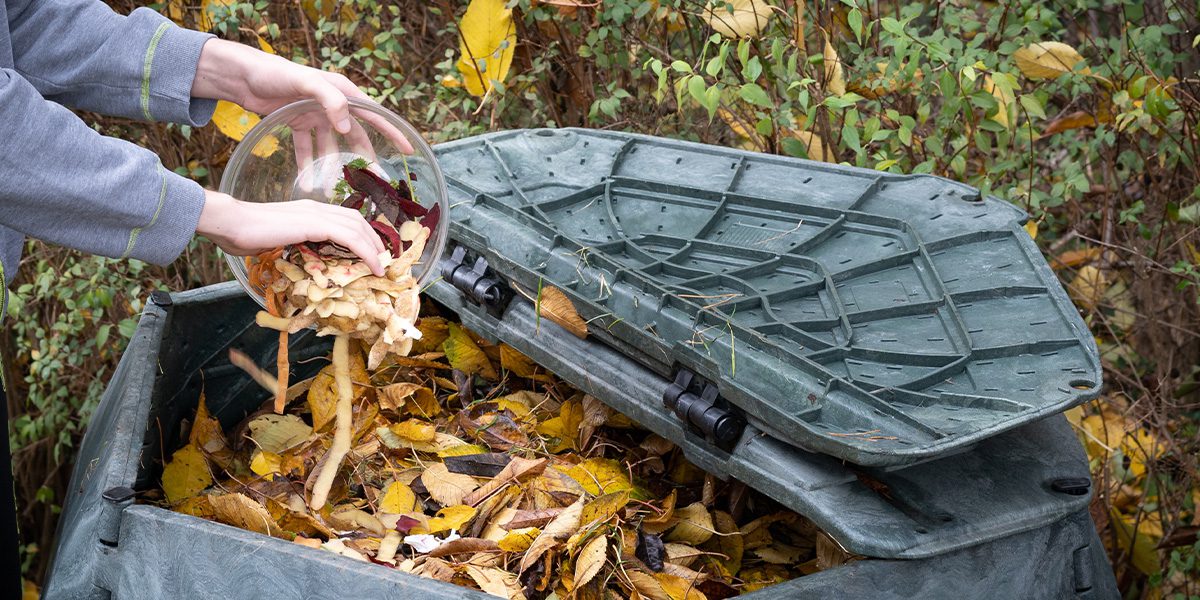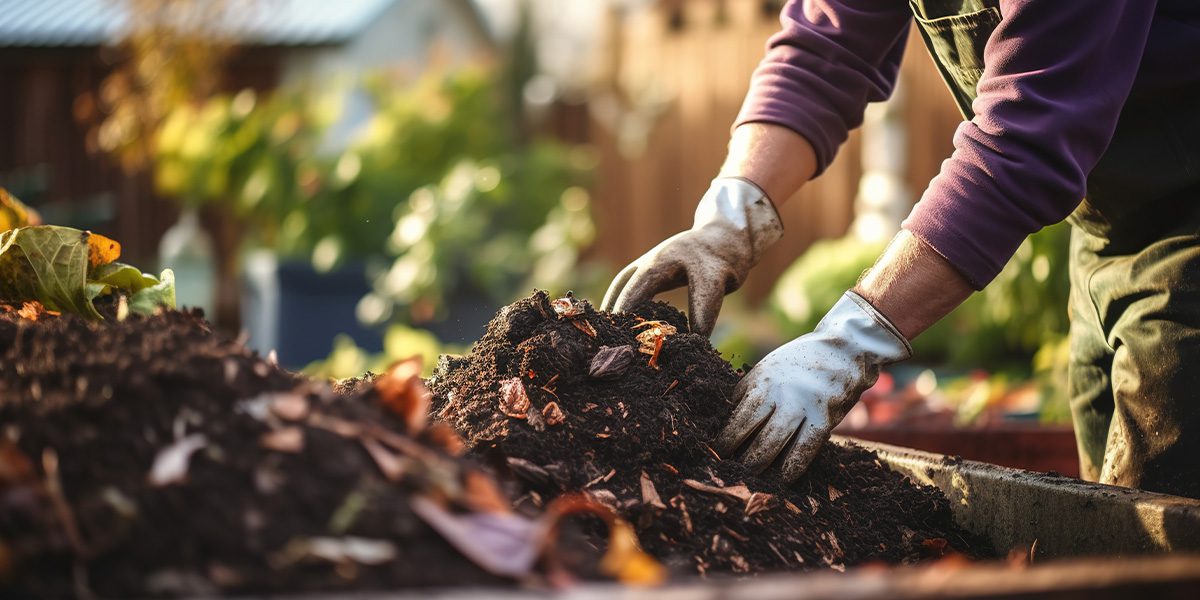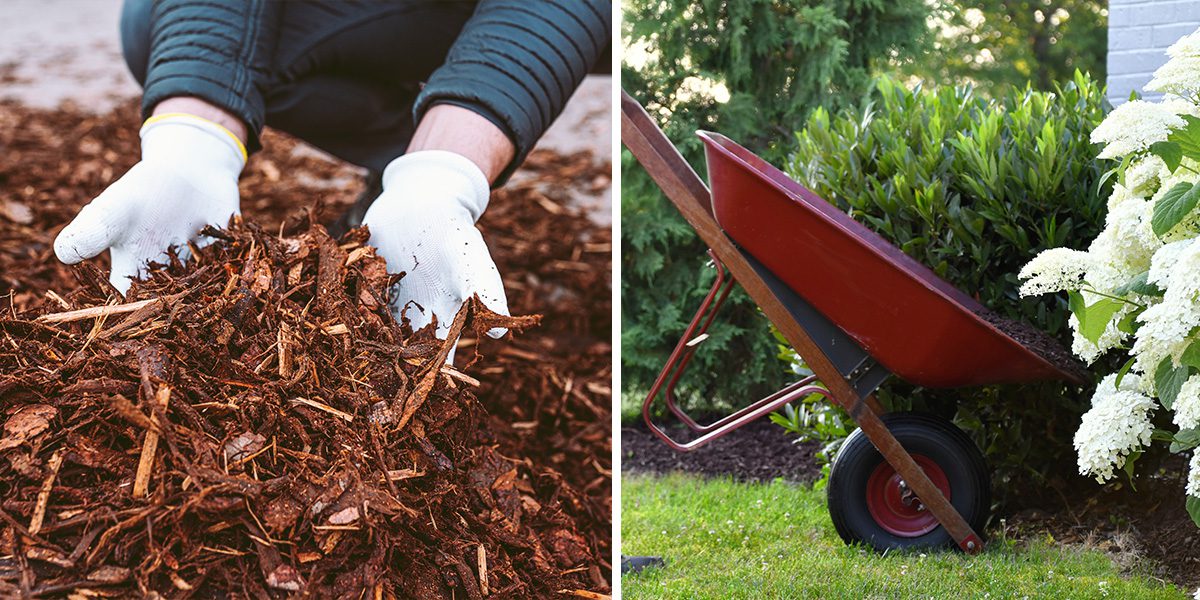Nature likes to operate in a cycle, with plant life returning essential nutrients back to the soil as they die and decay.
As the leaves begin to turn this time of year, our Illinois skies are once again filled with gorgeous shades of scarlet and gold. However, these stunning canopies are more than mere eye candy; they also give us a perfect opportunity to nourish our soil by turning them into compost. This guide will explain why spreading compost and mulch is so essential for your fall garden and will also give you a few tips to help you make and improve your own homemade compost!
Why Should I Compost?
Nature likes to operate in a cycle, with plant life returning essential nutrients back to the soil as they die and decay. Composting is a technique that allows for this cycling of nutrients in our garden at a higher speed than would normally occur. Creating our own compost pile in our backyard allows us to transform our common garden “waste” into nutrient-rich food for our soil and plants.
 Getting Started with Fall Composting
Getting Started with Fall Composting
When you picture compost, what do you see? If a horrific stench and wasp nests come to mind, then you probably haven’t been doing it right in the past. The secret recipe for an ideal compost is a 1:1 ratio of “greens” and “browns.” Greens are nitrogen-rich materials like grass clippings, green plant material, and kitchen scraps. Browns are carbon-rich stuff like dried leaves, dead plant clippings, sawdust, and hay. When mixed properly, these two components should produce a healthy compost, complete with an earthy smell and enough heat and movement to deter unwanted guests, like wasps.
Steps to Building a Compost Pile in Illinois
When building your compost pile this fall, begin by choosing a good spot in your yard, preferably in a well-drained area with partial sunlight. Collect fallen leaves, grass clippings, and garden trimmings, making sure to avoid diseased or pest-infested material. You can build wooden walls for your compost pile if you’d like, but even a free-standing pile will serve you well.
Build a layered compost heap, alternating between greens and browns, and keep it moist but not waterlogged. Turn the pile every two weeks to aerate it and speed decomposition. The more you turn it, the faster it breaks down, you should also add some garden soil or compost starter to speed things up. As temperatures drop, consider insulating the pile with straw, cardboard, or tarp to maintain heat. With the right care, your waste heap will transform into compost over the winter months, yielding rich black gold for your garden come spring.
Troubleshooting Your Compost Pile
Troubleshooting your compost pile is essential to ensure it breaks down effectively and doesn’t develop issues like odors, pests, or slow decomposition. Here are common compost pile problems and how to remedy them:
- Foul Odors: If your compost pile smells bad, it may be too wet or lacking proper aeration. Turn the pile to increase airflow and mix in dry, brown materials like leaves and straw. Ensure proper drainage to prevent excess moisture buildup.
- Pests: Compost piles can be attractive burrowing grounds for ants, flies, rodents, and other pests. To prevent this, avoid adding meat, dairy, or oily foods, as they can invite unwanted visitors. Cover the pile with a lid or mesh to deter pests, and make sure it’s well-aerated to discourage rodents.
- Slow Decomposition: If your compost pile isn’t breaking down as quickly as desired, it may be lacking nitrogen-rich green materials or proper aeration. Add more kitchen scraps, grass clippings, or coffee grounds for nitrogen, and turn the pile regularly to enhance decomposition.
- Weeds and Seeds: Sometimes, compost piles contain weed seeds that survive the decomposition process. Ensure your pile reaches a high enough temperature (around 140-160°F) to kill weed seeds and pathogens, and avoid adding invasive or heavily seeded plants.
- Mold or Fungus Growth: While some mold or fungus is normal in compost, an excessive amount may indicate poor aeration, so turn your pile more frequently to promote airflow and reduce its moisture content.
Using Compost in Fall Gardening
Fall is perfect for more than just building a new compost pile; it’s also an ideal time to spread finished compost on your garden! Your perennials have mostly died back to the ground, meaning your garden is clear and open for new additions. Plus, the bugs and bacteria in the compost continue to work over the winter, creating some heat for your plants’ roots, mixing nutrients all around, and continuing to break down the plant matter. When the snow melts and the ground dries, you’ll have nutrient-rich garden soil ready for spring planting.
Mulching Your Chicago Garden in the Fall
Have you ever been out to the forest and come across any bare soil? You rarely find it. Most soil is always covered by plants, dead plant matter, or likely both. In the garden, we call that dead plant matter “mulch.” Mulch is essential for protecting our topsoil from erosion, creating a habitable home for soil bugs, and enriching the soil with fresh nutrients.
Mulching your garden at any time of year is a good practice, but mulching over the fall has a few unique benefits. Like compost, it insulates the plant roots from winter’s extreme cold and spring’s destructive freeze-thaw cycle. It also protects your soil from erosion caused by winter storms, snow melt, and wind. Plus, it helps your soil retain moisture at a time when plants, shrubs, and trees have limited access to water.
What Kind of Mulch Should I Use?
Bark mulch or wood chips are a reliable choice for perennial gardens, shrubs, and trees. However, woody material can lock up nutrients and get in the way of planting in vegetable gardens, so a better choice for your veggie plot is shredded leaves, straw, or grass clippings.
Combined with a layer of compost underneath, you create a prime environment for building rich, healthy soil over the winter.
Can I Apply Compost On Top of Bark Mulch?
Putting compost on top of bark mulch would defeat the purpose of your mulch, so if you already have bark mulch in your garden, you’ll need to rake it away before applying your compost, replacing it back on top afterward.
When fall leaves grace the ground, it’s time to use these gifts from our trees to nourish our soil with compost and mulch, benefitting our soil all winter and creating a nutrient-rich garden for next year’s growing season. For more information on fall composting and mulching, come visit our garden centers in Carpentersville and Bloomingdale!
Platt Hill Nursery is Chicago’s premier garden center and nursery.

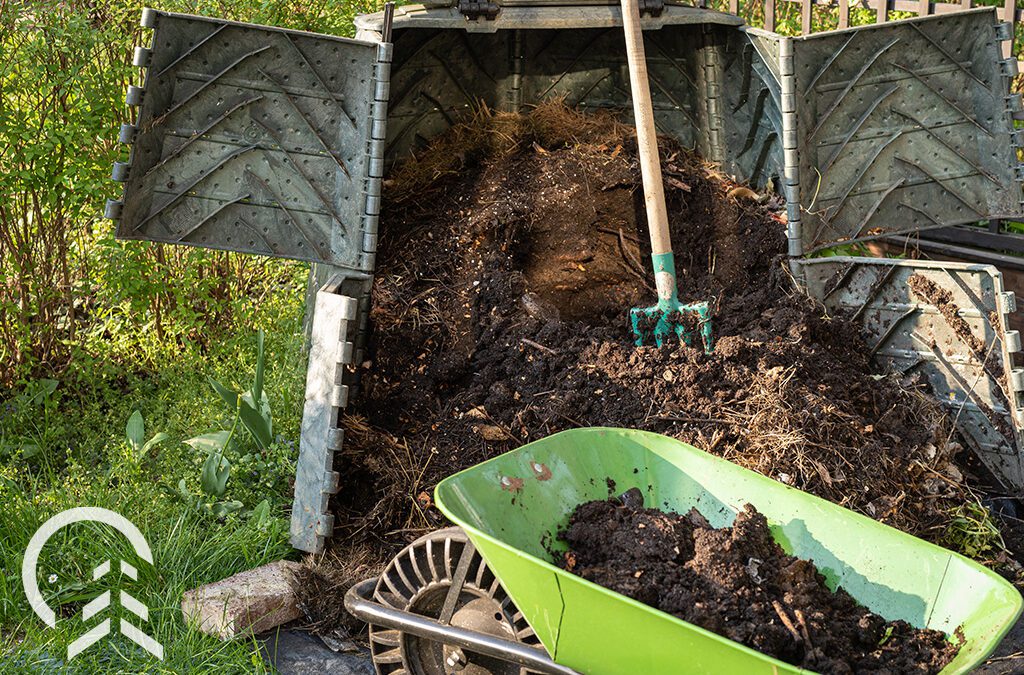
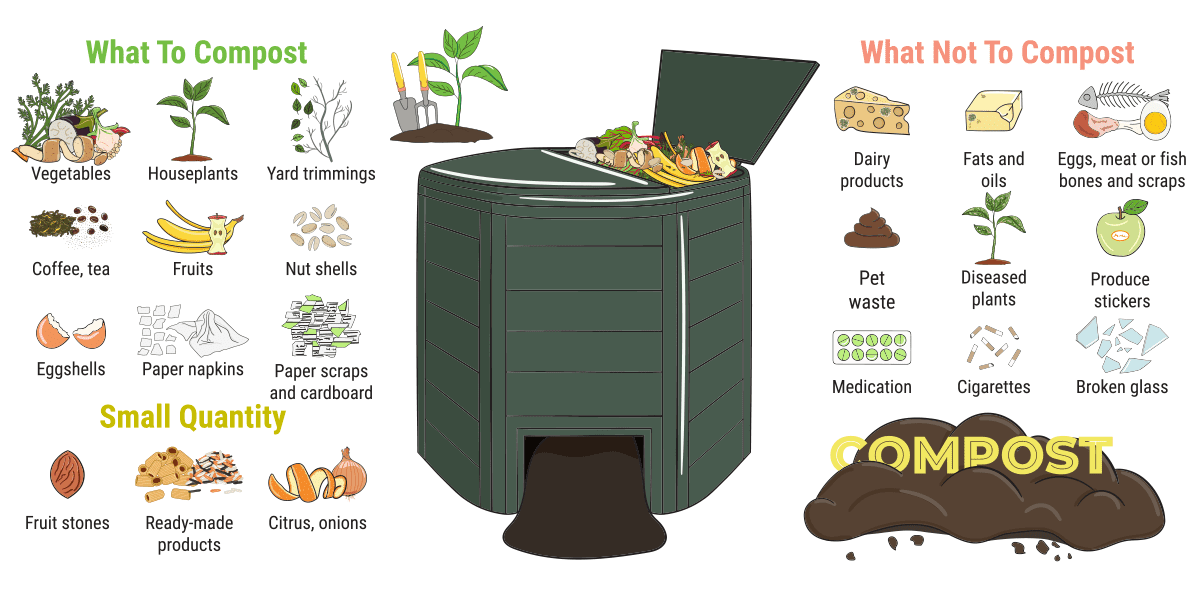 Getting Started with Fall Composting
Getting Started with Fall Composting 